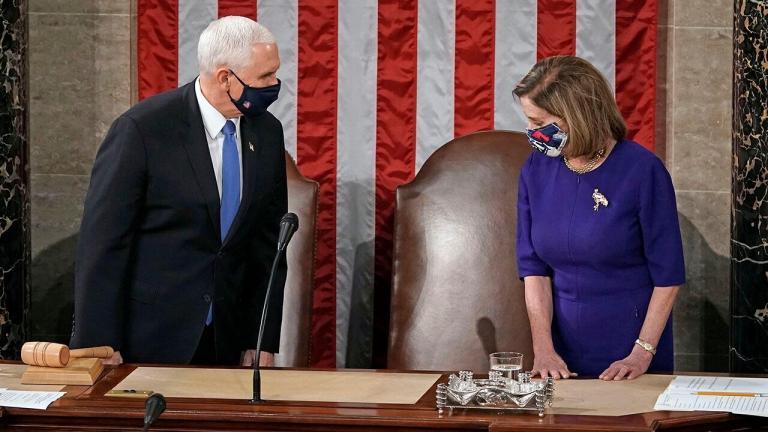
Will Tanner is Director of Onward and a former Deputy Head of Policy in Number 10 Downing Street.
Britain’s vaccination success has many parents. Kate Bingham for leading the Vaccines Taskforce. The Prime Minister, Chancellor and Health Secretary for backing its ambitious approach in spite of costs and risks. The scientists, researchers and companies who designed, tested and manufacture the vaccines. The NHS, military and volunteers who are jabbing our arms. But a small part of the credit should also go to someone no longer in Government: Theresa May.
When the former Prime Minister announced the revival of a Government Industrial Strategy in 2016, there was noticeable disquiet among many Conservatives. For three decades, industrial strategy had been – in the words of one Cabinet Minister – “two words that should never share the same sentence”. In discussions in Downing Street at the time, I remember MPs and free marketeers grimacing when Theresa spoke of “the good that government can do” in the economy.
There are good reasons for this scepticism, of course. Britain’s history of industrial policy is notorious for expensive misfires. The critics are right when they warn that Government often has neither the information nor the expertise to pick which companies or markets will “win”, and that trying to do so can both skew competition and encourage rent-seeking. The spectre of British Leyland casts a long shadow in Whitehall – and rightly so.
But more recent experience, not least the recent vaccines effort, demonstrates that there are more sophisticated ways to do industrial strategy – and that not having a strategy at all can be even more fatal in the long-run.
The approach embraced since 2016 is not so much about picking winners but, as the Bank of England’s Andy Haldane puts it, laying the foundations. It focuses on broad policies we know boost productivity and drive wage growth – notably R&D, skills, and digital and physical infrastructure – and sets about reversing the UK’s historic weaknesses in those areas. Hence commitments to spending 2.4 per cent of GDP on R&D, radically expanding technical and STEM education, and committing GBP100 billion a year to capital infrastructure by successive Chancellors.
Within this approach, the Government has taken some informed bets – investing heavily in sectors where the UK ostensibly benefits from comparative advantage and where demand is highly likely to grow in future – things like artificial intelligence, clean growth and, importantly for the vaccine effort, life sciences. Crucially, it has done so not by assembling “national champions”, as Tony Benn did so disastrously with British Motor Holdings and Leyland Motors, but by creating and funding institutions that de-risk innovation and crowd-in private investment and safeguarding industries that are vital for national prosperity.
The institutions funded through the 2017 Industrial Strategy and its sibling, the Life Sciences Industrial Strategy, include the Cell and Gene Therapy Catapult, which helps translate gene research into commercially viable therapies; the Advanced Therapies Treatment Centres, which helps roll out cell and gene therapies to patients; and the Vaccine Manufacturing Innovation Centre, a 7,400 sq m state-of-the-art facility at Harwell in Oxfordshire funded in 2018 to develop and manufacture vaccines.
Alongside the 2017 Industrial Strategy, the Government set out plans to protect strategically important sectors from hostile foreign takeover, culminating in last year’s National Security and Investment Bill. The motivation was none other than AstraZeneca, targeted in an ill-fated GBP69 billion hostile takeover by Pfizer in 2014 designed to reduce its tax liabilities. As Theresa May said when she was running for the leadership of the party: “A proper industrial strategy should be capable of stepping in to defend a sector that is as important as pharmaceuticals is to Britain.”
Three years on from that strategy, and each of those decisions is proving critical to Britain’s vaccine story. The CGT Catapult is accelerating the time taken for new treatments to be delivered and is adding manufacturing capacity through a manufacturing site in Braintree, Essex. The ATTC network is supporting work in hospitals to identify and treat patients requiring intensive treatment. The VMIC, when it opens this year, will be able to produce up to 70 million vaccine doses in four to six months using a formula created by AstraZeneca, the industrial saviour that was nearly lost in a tax evasion deal. Prudent intervention by government has paid dividends.
Now imagine if the Government had not opted for an industrial strategy and instead pursued a laissez faire approach. The market would have responded to the pandemic, of course. But as a country the UK would be behind the curve, having to source manufacturing capacity in other countries and less effective at identifying new mutations as they arise. You only need to look to the EU’s recent contortions to understand the potential economic, health and political consequences.
The point about industrial strategy is not that ministers can create growth-enhancing innovation simply by spending taxpayers’ money or that any government can choose where future growth will come from. That has never worked. Industrial strategy is, instead, a recognition that the State – through signals, investment and pull-through procurement – already encourages private sector activity in multiple ways, that it has choices about how it uses those levers, and that, in high-risk, high-value sectors, it can accelerate progress if the public sector shares some risk.
The public sector cannot do this everywhere. There are not, as James Callaghan said in 1976, anywhere near 39 “key” industries, then or now. Nor should the last Government have signed sector deals with amorphous and non-strategic sectors like tourism. But there are areas – like climate change adaptation, machine learning, synthetic biology, or low carbon transport, for example – where we can invest with confidence in both our existing scientific base and the potential for future demand.
The vaccine rollout shows exactly how industrial strategy should be done. It is easy to revel in its benefits but it is much harder to heed the lessons and embrace its approach in other areas of the economy. But that is exactly what the Government should do. The speed of our economic recovery, our ability to deliver net zero, and our international competitiveness in the face of new industrial superpowers like China, all depend on it.
Originally found on Conservative Home Read More







